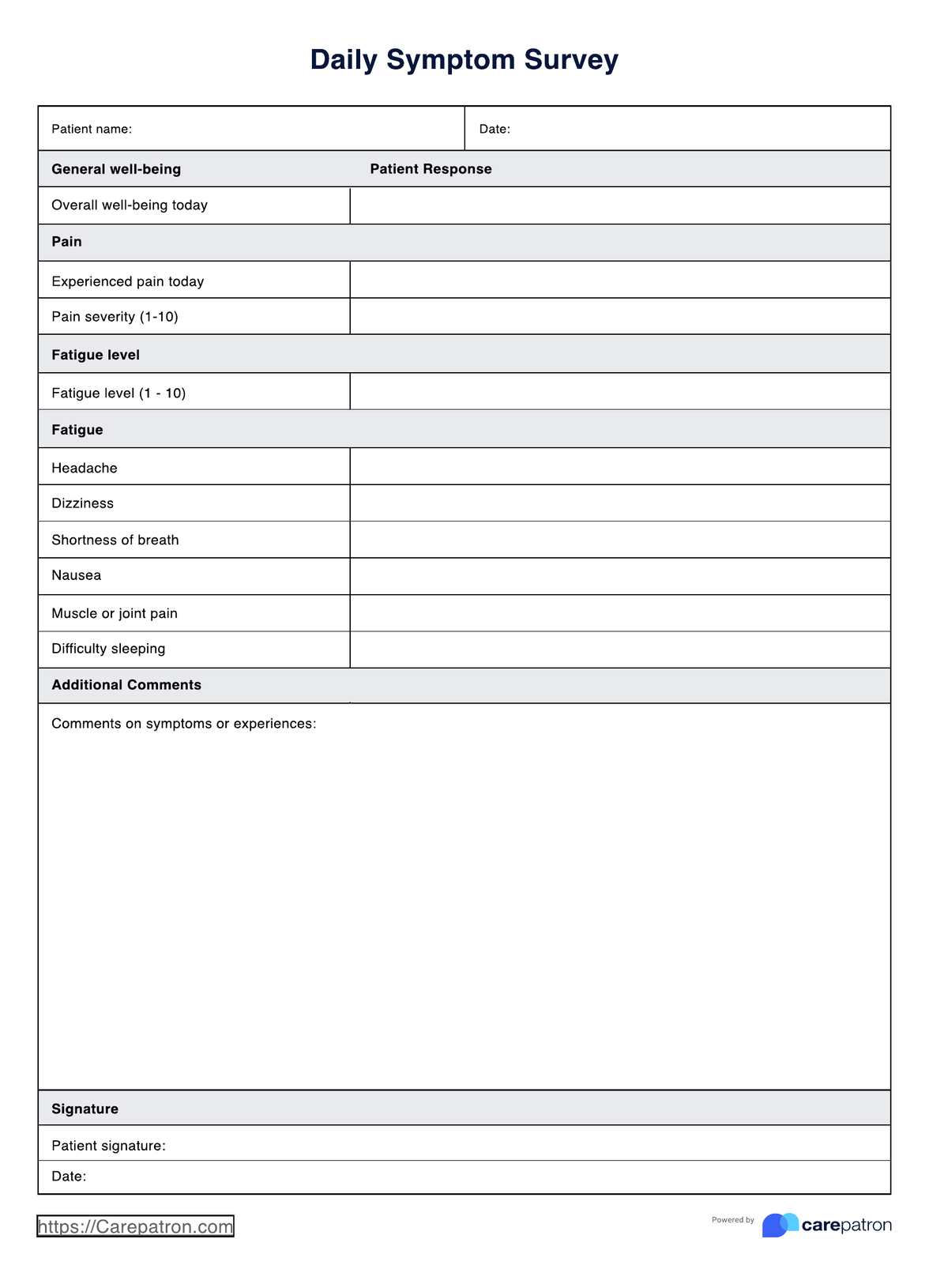A Daily Symptom Survey can be used when monitoring patients with chronic conditions or during treatment to track progress and identify any potential changes in health status.

Daily Symptom Survey
Monitor and track patient health with a Daily Symptom Survey, a valuable tool for assessing symptoms and improving clinical outcomes in your practice.
Daily Symptom Survey Template
Commonly asked questions
Creating a Daily Symptom Survey involves selecting relevant questions to assess a patient's symptoms and health status. Healthcare professionals can use existing templates or create their own based on their patient population's needs.
Daily Symptom Surveys can help healthcare professionals monitor and track their patients' health status, making informed decisions about their treatment plans, leading to improved patient outcomes. Additionally, Daily Symptom Surveys can enhance patient engagement, improve communication with healthcare providers, and provide valuable insights into the efficacy of treatment plans.
EHR and practice management software
Get started for free
*No credit card required
Free
$0/usd
Unlimited clients
Telehealth
1GB of storage
Client portal text
Automated billing and online payments











